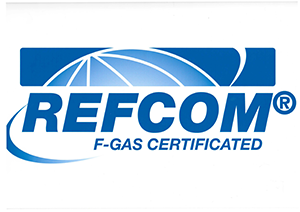Air conditioning units, modern ones specifically, come with a wide range of different modes and settings, each one working towards creating a comfortable environment. Depending on the brand, size and technicality of the unit, air conditioning systems typically include settings for speed and power, automation and temperature levels. Whether you’re trying to beat the summer heat, improve your sleep quality, or optimise energy efficiency, knowing how to use your air conditioner effectively is key.

The different air conditioning modes
Cool mode
Cool mode is the most commonly used setting during the warmer months and is typically used in commercial spaces such as offices, hotels, schools and any other workplace. When your AC is in cool mode, it lowers the indoor temperature to a pre-set level by blowing cool air into and around the room.
Heat mode
Working the same way as cool mode, heat mode releases warm air around the environment, making it the perfect feature for colder months or for those with a low body temperature. The AC extracts heat from the outside air and transfers it indoors to warm your home or commercial property.
Eco mode
Typically found in modern systems, eco mode lowers energy consumption by adjusting the cool or warm output to run more efficiently. By increasing the fan speed, eco mode runs at a temperature around 2 degrees higher or lower than the set amount. Although it works at a slower pace compared to other standard modes, eco features will ensure you are reducing your footprint and saving on bills.
Fan
Found on the majority of AC systems, fan mode works by circulating air throughout a building without actively heating or cooling it. This helps to improve air circulation and distribute the temperature evenly. This is especially helpful in larger spaces or areas where ventilation and airflow are limited, for example, a warehouse or school.

Dry mode
Dry mode is particularly useful in humid climates. It reduces the moisture in the air without significantly decreasing the temperature, making it ideal for those sticky, damp days or commercial areas such as swimming pools or spa facilities.
Auto mode
The main purpose of auto mode on air conditioning is to automatically adjust AC settings, meaning you don’t need to be responsible for maintaining a moderate temperature. The system will switch between hot and cold air to keep the room at your desired temperature.
Quiet mode
One of the concerns many business owners have with air conditioning is that it could be considered distracting by employees. However, many modern systems come with a quiet mode to reduce the noise it produces and enhance comfort. This is especially helpful in offices or areas which are genuinely quiet or require concentration.
Swing mode
Swing mode works by adjusting the direction of the airflow by moving the horizontal and vertical louvres. This works by ensuring an even distribution method throughout a space and avoiding hot or cold spots.

Turbo mode
Sometimes offering a standard turbo mode or a high power mode, this setting is ideal for when you need to cool down or heat up a room quickly using maximum capacity. This setting is perfect for extreme temperature days or in case a room gets overheated. However, turbo mode is energy-intensive and should only be used when absolutely necessary.
Modern settings and additional features
As mentioned previously, the systems and options you have will depend greatly on the unit you own, with older versions offering a lot less than more modern units. To find out more about the modern features, have a read through our article on 6 modern features used for air conditioning systems. You can also find some examples below:
- Smart home integrations and wifi connectivity
- Thermostats and auto timings
- Energy efficiency
- Zoning


